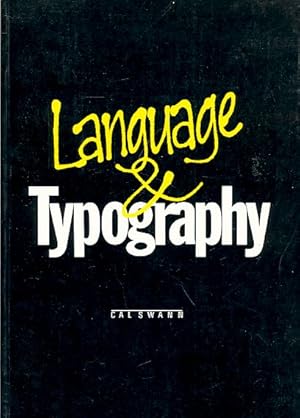Swann Carl (3 results)
Product Type
- All Product Types
- Books (3)
- Magazines & Periodicals
- Comics
- Sheet Music
- Art, Prints & Posters
- Photographs
- Maps
-
Manuscripts &
Paper Collectibles
Condition
- All Conditions
- New
- Used
Binding
Collectible Attributes
- First Edition
- Signed
- Dust Jacket (1)
- Seller-Supplied Images (2)
- Not Printed On Demand
Seller Location
Seller Rating
-
Monumenta Nipponica Journal: Studies in Japanese Culture, Volume XXIX Number 3, Autumn 1974
Published by Sophia University, Tokyo, Japan, 1974
Seller: The Old Sage Bookshop, Prescott, AZ, U.S.A.
Soft cover. Condition: Very Good. Softcover in very good condition. Article topics include : Utakata no ki by Mori Ogai; the problem of Utaka no Ki; Hojo Soun's twenty-one articles; Bakumatsu foreign employees; survey review: Yanagita Kunio; and more. Size: 4to - over 9¾ - 12" tall. Journal.
-
Language and Typography.
Published by Van Nostrand Reinhold; NY, 1991
ISBN 10: 0442308221ISBN 13: 9780442308223
Seller: Fundus-Online GbR Borkert Schwarz Zerfaß, Berlin, Germany
Book
Condition: Gut. 95 S.; Illustrationen; gr.-8°; kart. Gutes Ex.; Einband gering berieben. - INHALT : Introduction - Chapter 1 - Introduction to language as human communication This chapter defines the word language and introduces linguistic terminology in pointing out some of the main characteristics of the spoken language. The link is then made between the verbal and visual signals we use in conjunction with language as a method of human communication, and concludes with a brief look at some basic communication theory. - Chapter 2 - A developing and living language This is a brief summary of how the English Language developed into an accepted standard with particular reference to the role of the written/printed word. It touches upon the variability of English as a living language and explores some of the differences of expression according to the purpose and media by which the language is transmitted. - Chapter 3 - The visual system This chapter looks at the visual transmission of language as typography and outlines some of the research into factors affecting legibility. It establishes the visual perception of language as a cognitive route to understanding distinct from the aural route. It then outlines some of the structural categories by which the visible language may be transmitted. - Chapter 4 - Form and connotation This explores the complexity of the relationship between content, form and context. It considers the shape of the letters, their connotative qualities, and how these factors are further influenced by aesthetics, size and general layout. The complementary relationship of function and form are examined in a number of conventional visual registers. - Chapter 5 - Visible speech? This chapter looks at a number of amateur and professional productions of public signs in an examination of their lingustic content, visual presentation, and ethnographic context. It first indicates that public understanding of both aural and visual language areas is very basic and ultimately inadequate, and demonstrates this by looking at the varied quality of some of the signs and notices produced in the environment. It then suggests a general approach to the analysis of the language and layout of signs and advertisements and examines a particular example as a case study. Finally, a brief review of the ground covered in these chapters. - Bibliography. ISBN 0442308221 Sprache: Deutsch Gewicht in Gramm: 550.
-
Language and typography. An introduction to the basic theories of language and its visible transmission as typography.
Published by London : Lund Humphries, 1990
Seller: Fundus-Online GbR Borkert Schwarz Zerfaß, Berlin, Germany
Book
Condition: Sehr gut. 95 S. Umschlag leicht berieben, sonst gutes Exemplar. - Designers are generally intuitive about language, although their training has made them well informed and articulate about the structure of visual forms. This book introduces basic linguistic theories which are appropriate to the visual domain of the designer. It explores the relationship between the strategies which speakers use to communicate effectively with each other and the visual counterparts which designers use in a similar pragmatic approach. It seeks to provide a better framework within which designers may use language in a more informed and creative way. In the absence of a traditional typographic discipline, which was based on a knowledge of the technological processes involved in printing words, spaces, sentences, etc, onto a page, a new discipline has to be found which will guide the presentation of legible words in the right 'visual tone' of voice. The successful transmission of the visible language requires a full understanding of the similarities and important differences between language when expressed in spoken, written or printed form. This book makes plain for designers the relevant theories which provide a basis for the typographic interpretation of language. A wide range of examples of source material illustrate these points. Sprache: Deutsch Gewicht in Gramm: 550 Mit zahlr. Abb. Gebundene Ausgabe mit Schutzumschlag.




